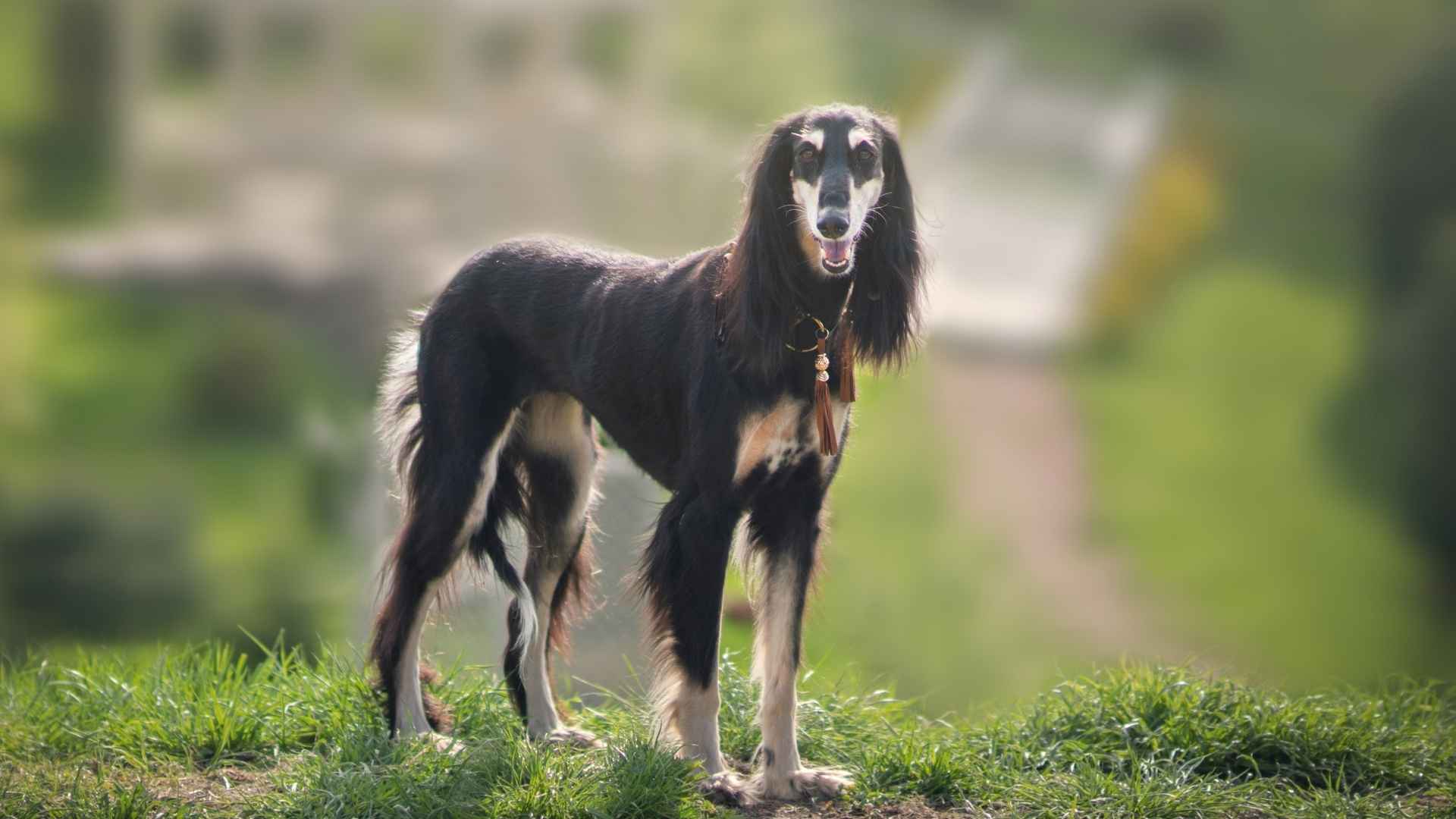Some dogs are more than just loyal companions; they are ancient artifacts wrapped in fur, walking reminders of human history’s earliest stories. As they move beside us, they carry the silent echoes of forgotten temples, royal courts, and snow-covered trails. These breeds are more than pets; they are living history, their DNA a direct thread connecting us to a world where dogs were not just friends, but hunters, guardians, spiritual symbols, and noble partners.
What sets these dogs apart isn’t just their beauty or loyalty, but the astonishing fact that their genetic lineage has remained largely unchanged for thousands of years. From serving in sacred rituals to standing beside emperors and braving the harshest terrains, these dogs have played powerful roles in shaping both survival and spirituality across civilizations.
In this article, we’ll explore 10 ancient dog breeds that have defied time, preserved their purpose, and continue to represent a legacy of strength, devotion, and ancestral connection. Whether born in snowfields, palaces, or desert paths, each of these dogs is a testament to the enduring bond between humans and their earliest canine companions.
Dog Breeds with Ancient DNA Links
1. Saluki
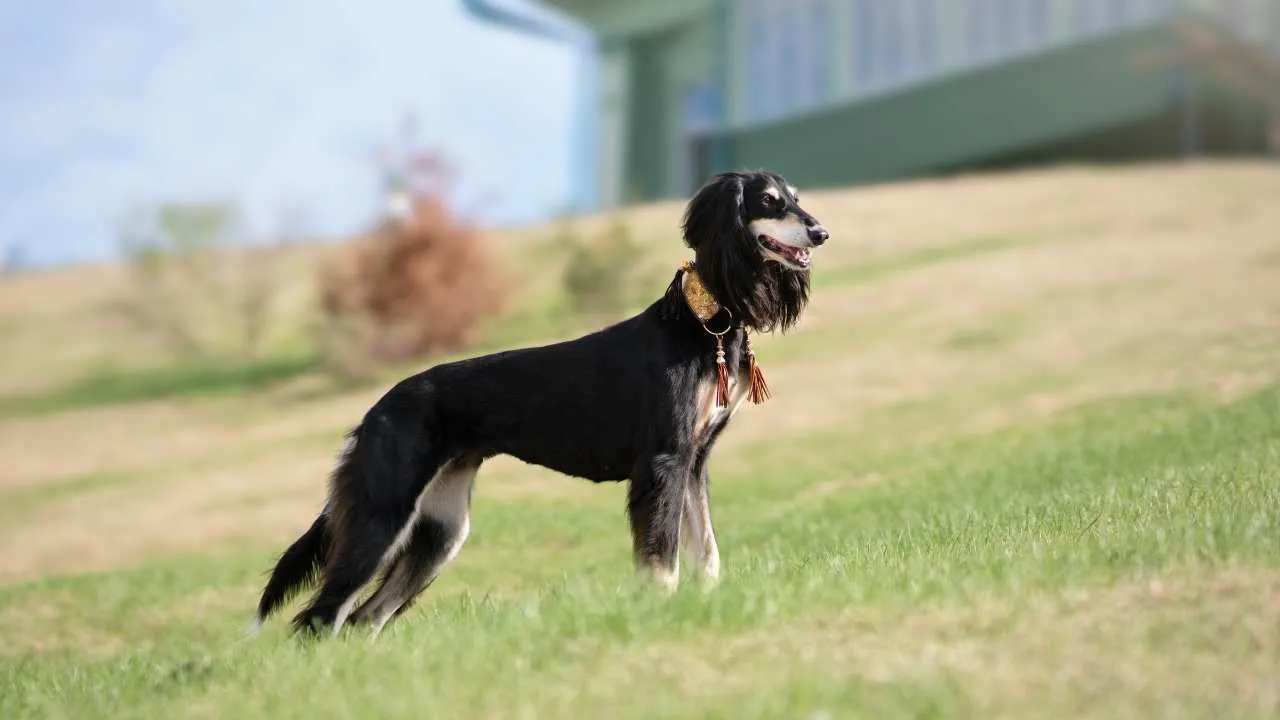
Salukis are ancient hunting dogs traditionally used by desert tribes to track and capture game. With their sleek bodies, short coats, and long legs, they are built for speed and endurance, making them exceptional hunters. In fact, Salukis are among the fastest dog breeds in the world, capable of reaching speeds up to 42 mph.
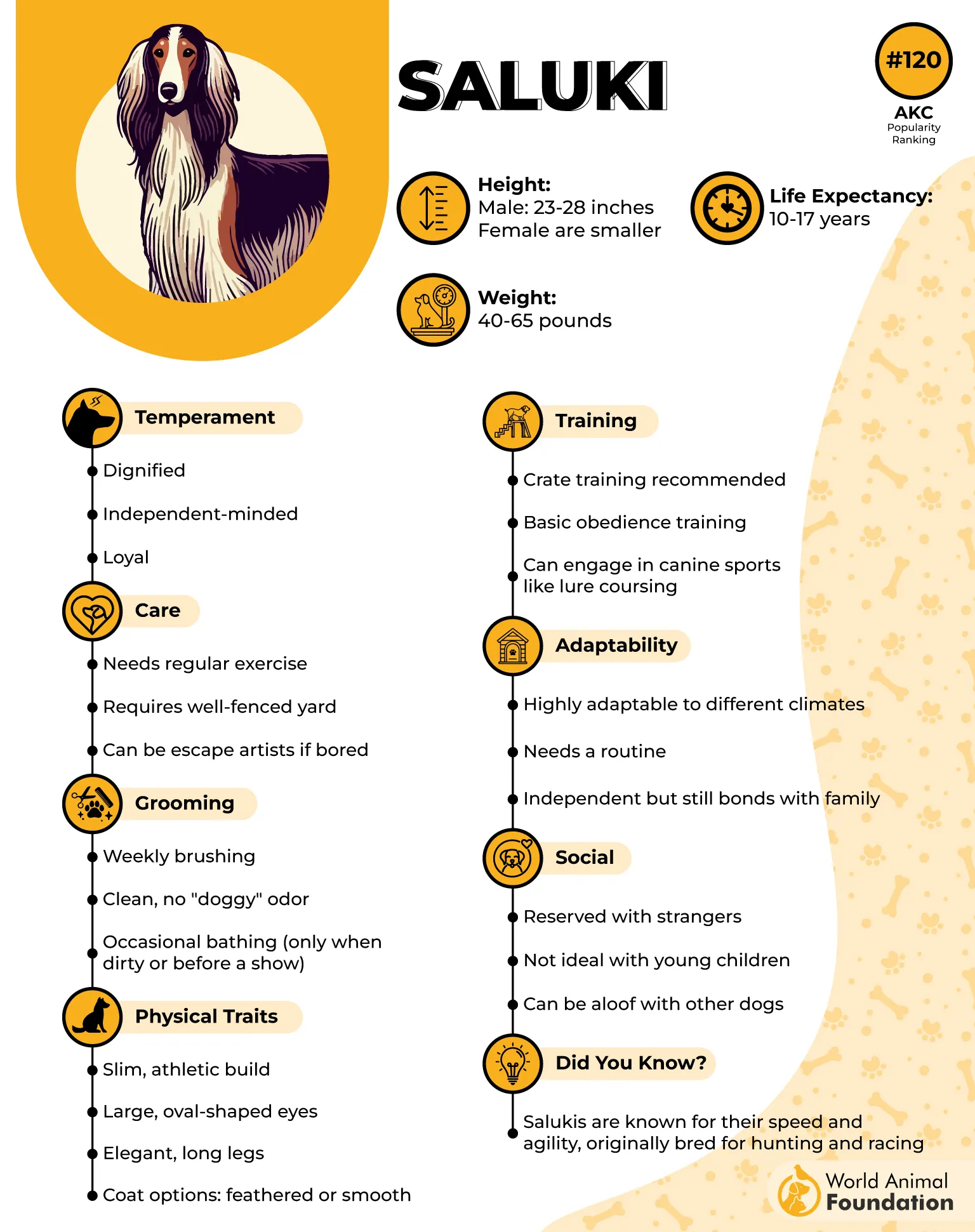
These dogs date back as far as 6000 to 7000 BC and were prominently depicted in the Sumerian Empire, an area that includes modern-day Iran. Known for their elegance and refined build, Salukis were favored by Egyptian pharaohs and often seen as symbols of nobility.
Also referred to as Persian hounds, Salukis rely more on their keen eyesight than their sense of smell, which classifies them as sighthounds. Their elongated heads and deep, expressive eyes enhance their ability to spot and pursue prey with incredible swiftness.
2. Basenji
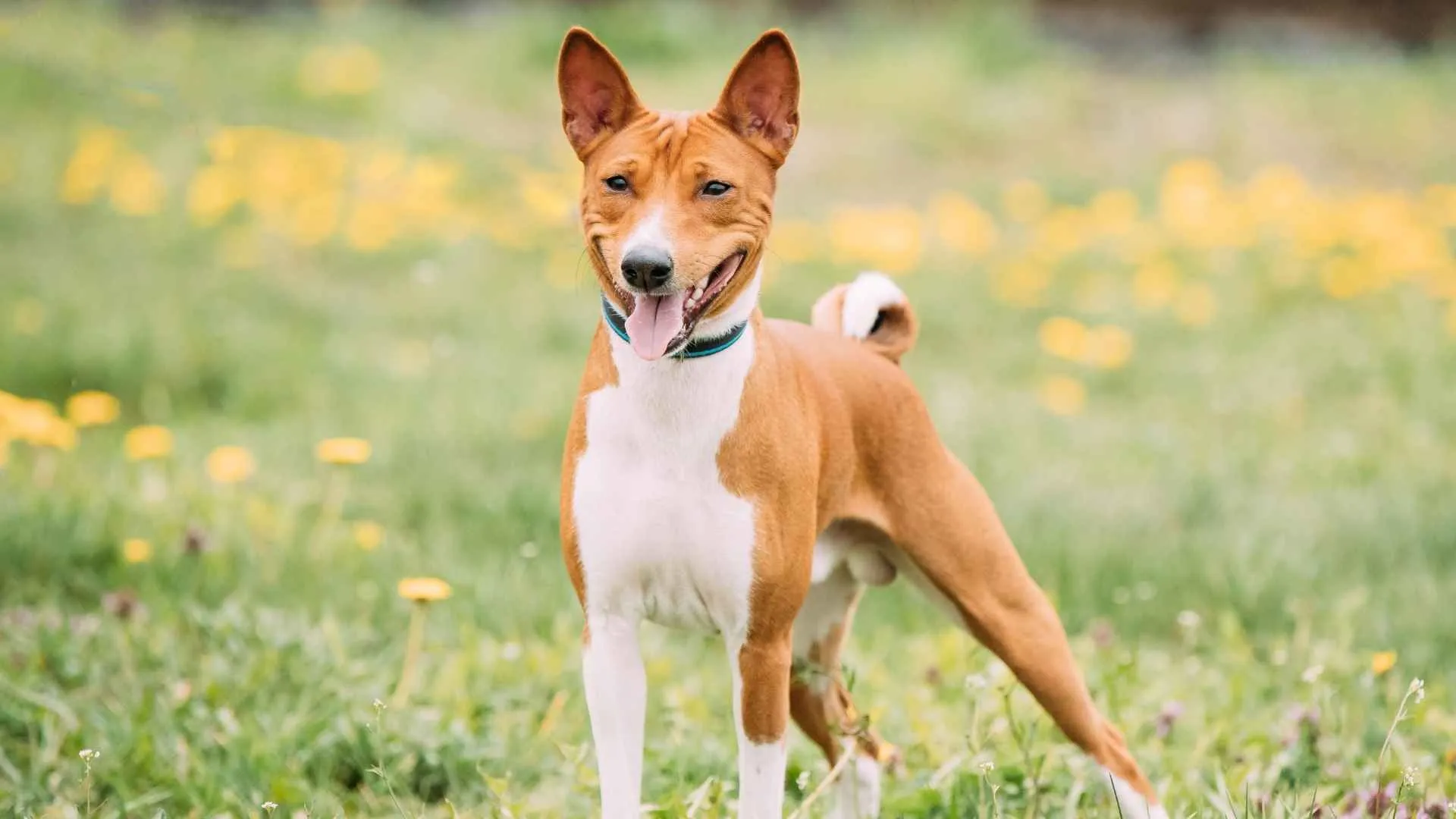
The Basenji is not your typical dog; they don’t bark. Instead, they produce a unique yodel-like sound known as a “barroo.” This ancient breed originated in Central Africa and has roots tracing back over 4,500 years.
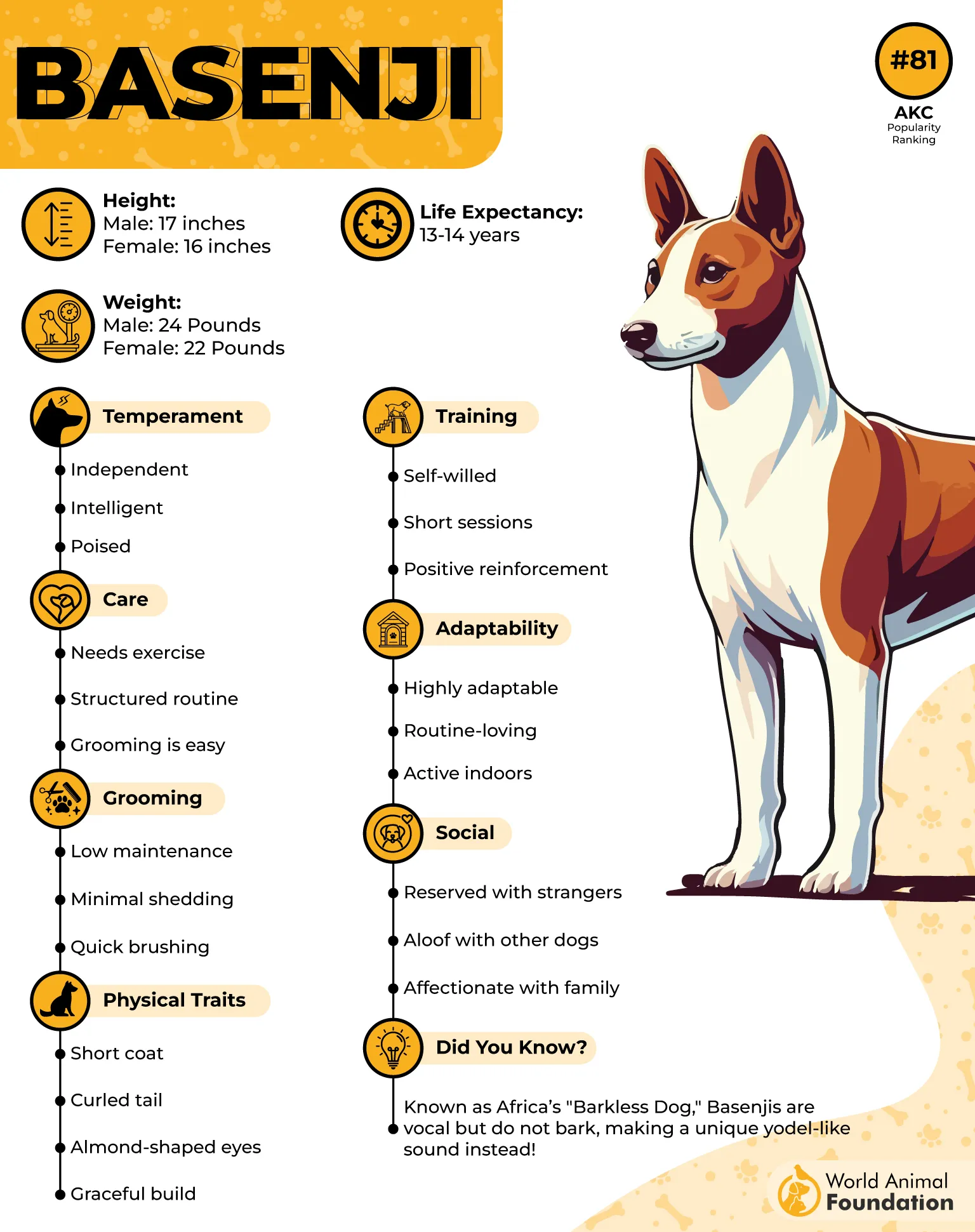
Basenjis are playful, intelligent, and remarkably quiet. They are considered one of the most dignified dog breeds, even appearing in ancient Egyptian art, where they were revered by pharaohs.
Recognized as one of the oldest dog breeds in the world, DNA studies reveal that Basenjis have maintained much of their original genetic makeup, along with the same curious, independent spirit found in modern dogs.
3. Afghan Hound
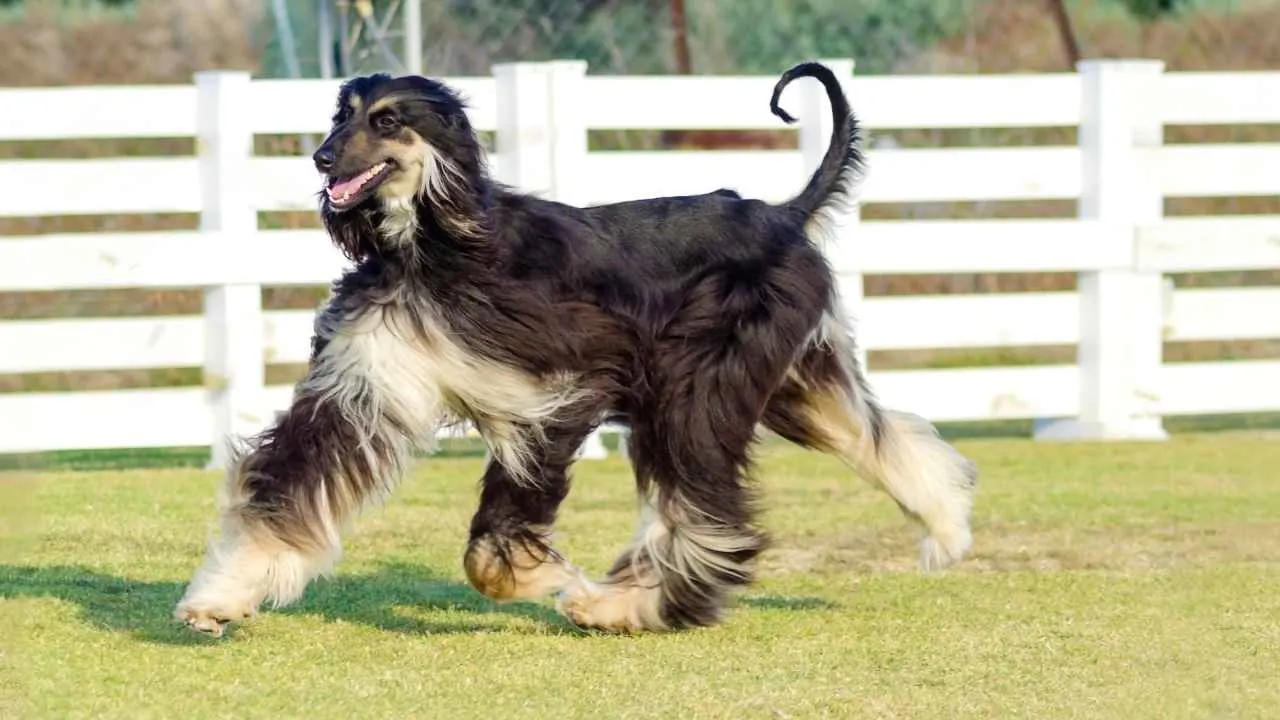
The Afghan Hound is a proud and elegant mountain dog, known for its long, flowing coat that gives it the appearance of a supermodel on four legs. But beneath that glamorous exterior lies a tough and resilient breed, originally developed to navigate the cold, rugged mountains of Afghanistan. Historically, they were used for both hunting and guarding.
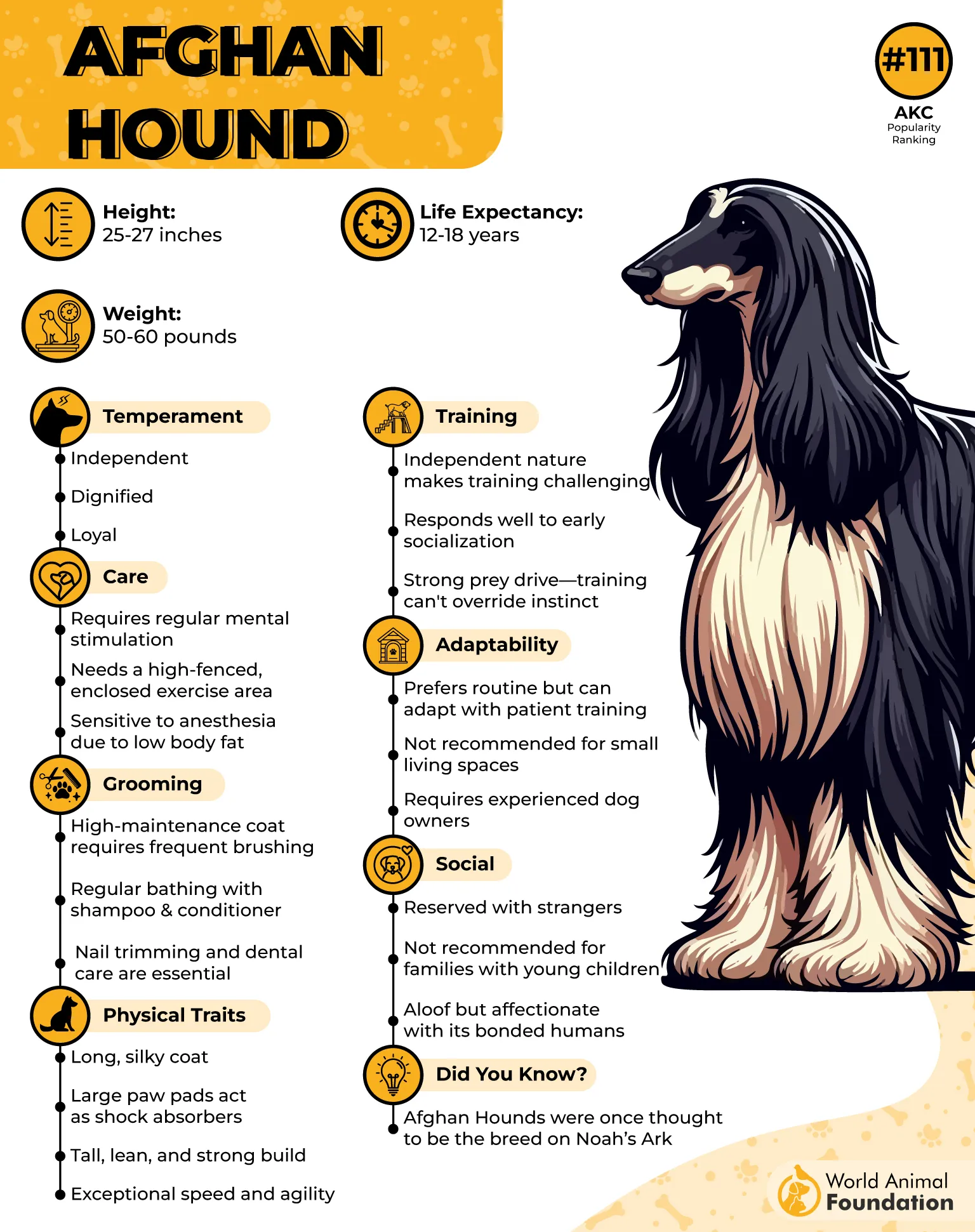
According to the American Kennel Club (AKC), Afghan Hounds are an independent breed, yet they form strong bonds and show deep loyalty to their human companions. Considered a basal breed, the Afghan Hound has ancient roots, with its modern lineage tracing back to the 19th century.
Though naturally reserved, these dogs are remarkably powerful and incredibly fast—traits that made them excellent hunters and continue to make them stand out today.
4. Alaskan Malamute
These big, fluffy dogs are the kings of the snow. The powerful Alaskan Malamute was originally bred as a sled dog, built for strength, endurance, and resilience in harsh Arctic conditions.
Valued by the native Arctic peoples, the Alaskan Malamute was more than just a worker—it was a trusted companion. These dogs were tasked with heavy-duty jobs, from pulling sleds to assisting in hunts, even helping track large game like bears.
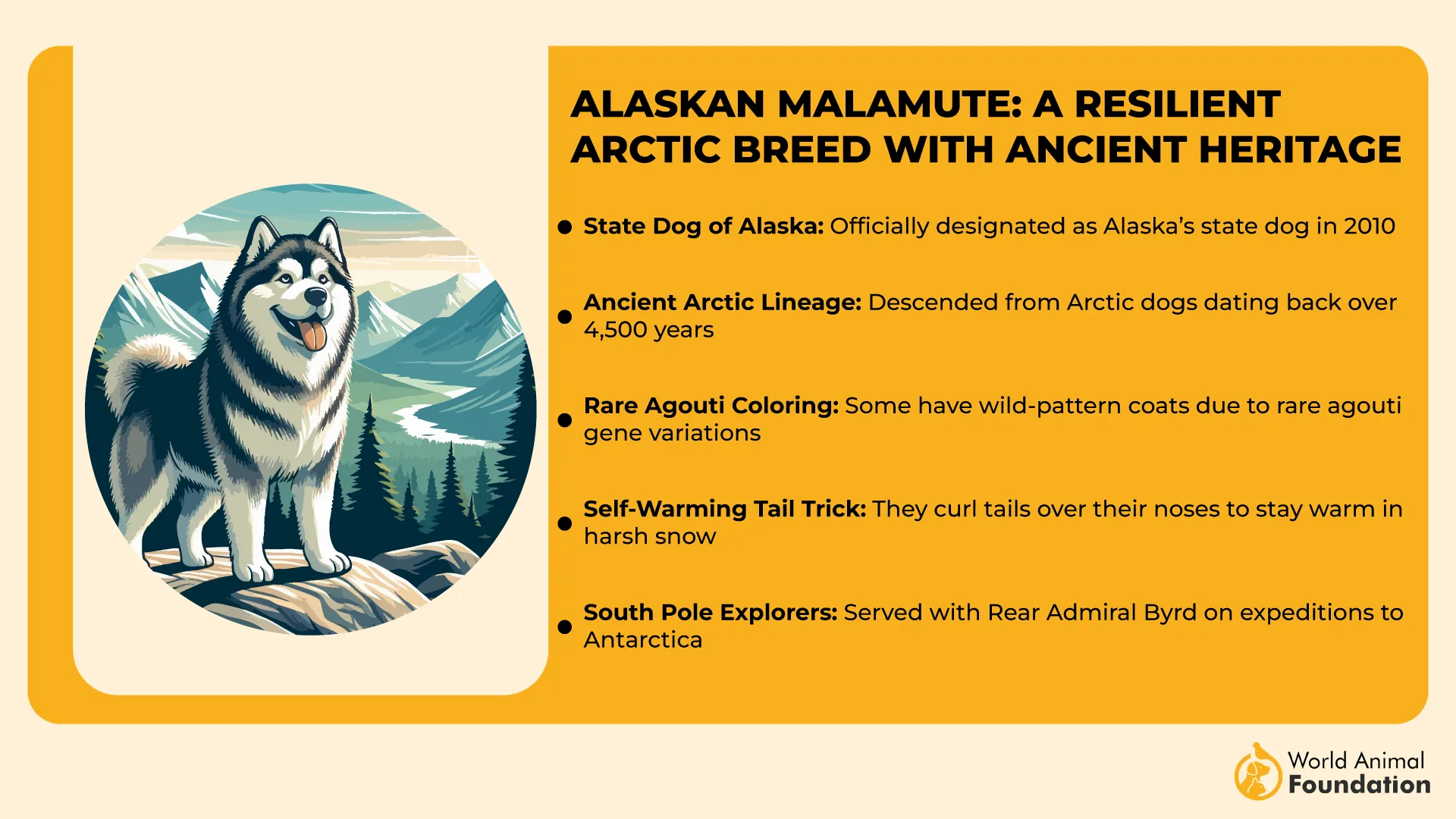
According to WebMD, Alaskan Malamutes are playful, confident, and incredibly strong. Their thick double coat helps insulate them against extreme cold, making them perfectly suited for snowy, frozen environments. Even today, these dogs are known for pulling heavy loads across some of the coldest places on Earth.
5. Tibetan Terrier
Tibetan Terriers are often called the “holy dogs of Tibet,” cherished by Buddhist monks in Himalayan monasteries. These cheerful and devoted dogs were raised in spiritual environments and were considered sacred, symbols of good luck, protection, and companionship.
Known for their affectionate and playful nature, Tibetan Terriers also wore a thick, weather-resistant coat that allowed them to thrive in the snowy Himalayan terrain.
Remarkably, this breed has remained largely unchanged for over 2,000 years. Their deep-rooted DNA links them to ancient Asian origins, making them one of the most historically significant and genetically preserved breeds in the world.
6. Chow Chow
The Chow Chow is often referred to as the “lion of China”—a powerful, majestic breed known for its massive build and signature lion-like mane.
With a proud, regal gait, these dogs have an ancient lineage, originating in East Asia over 8,300 years ago. Once favored by Chinese emperors, Chow Chows were kept within palace walls and often served as both hunting companions and loyal guardians.
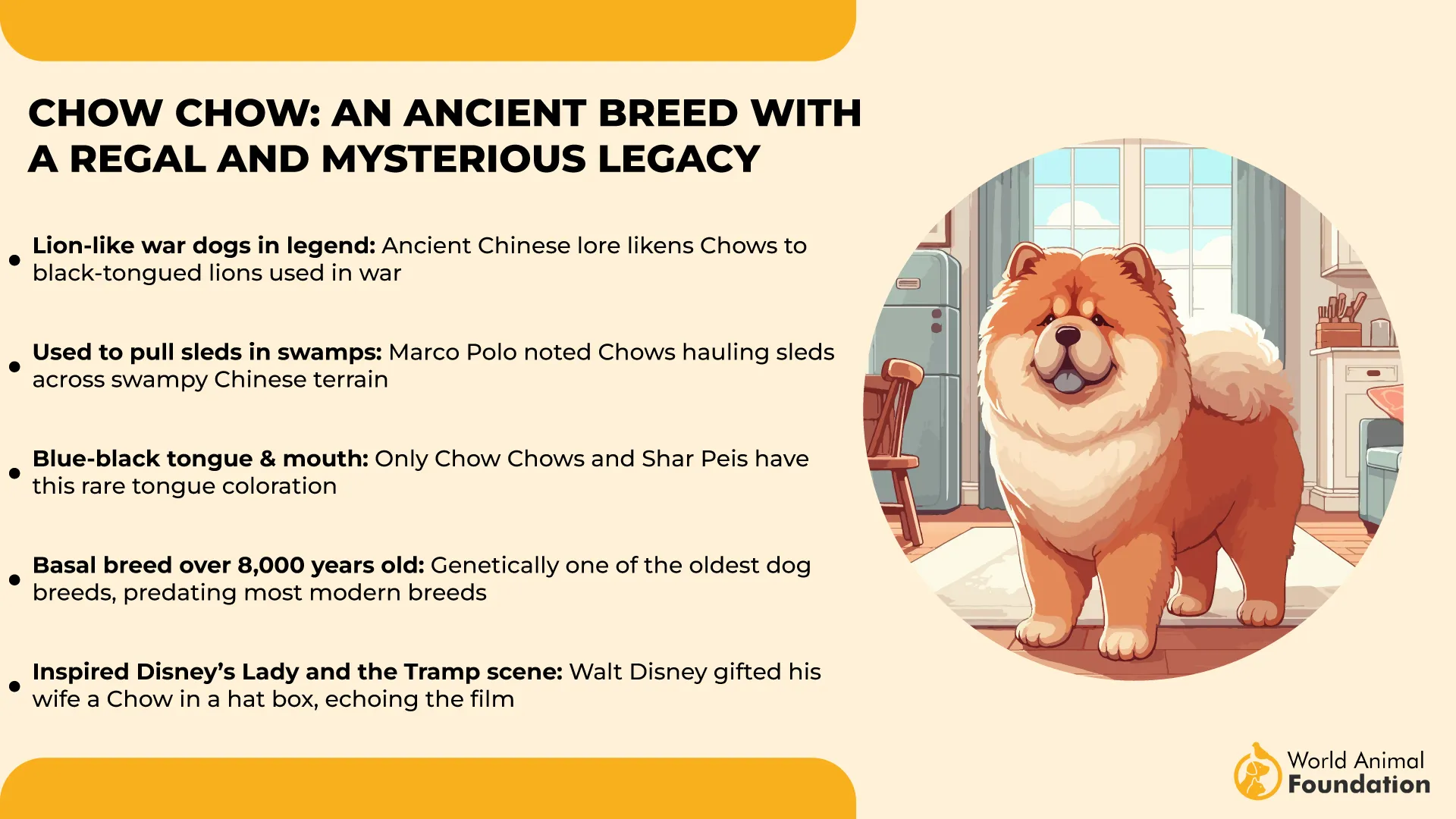
Known for their serious and quiet demeanor, Chow Chows are also deeply loyal to their families. Their thick double coat and distinctive fluffy appearance make them truly unforgettable, while their most unique feature is their blue-black tongue—a trademark of the breed.
Recent genetic studies suggest that Chow Chows are among the closest domestic breeds to wolves, showing minimal alteration over thousands of years. Despite their serious appearance, they are affectionate and gentle with those they trust, making them a blend of ancient strength and devoted companionship.
7. Pekingese
Pekingese may be small in size, but they carry a grand legacy. Once exclusively owned by Chinese royalty, it was considered a serious crime for anyone outside the imperial court to possess one without permission. Despite their compact build, Pekingese are bold, dignified, and full of character.
According to Britannica, these toy-sized dogs were regarded as sacred animals and were kept in palaces as symbols of success, protection, and spiritual purity. Throughout centuries of selective breeding, the Pekingese has retained its royal elegance and luxuriously soft coat, traits that continue to define the breed today.
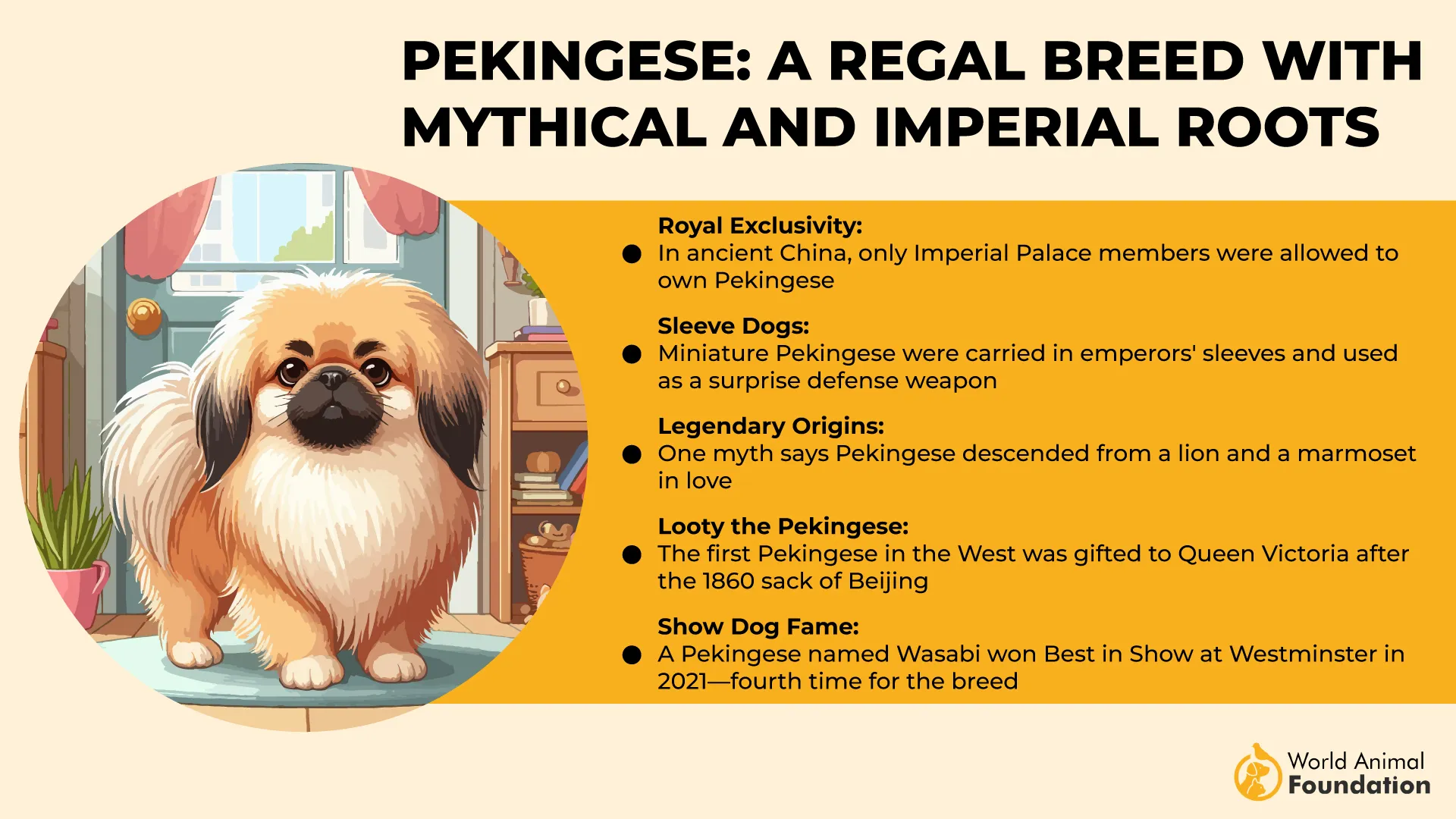
Although they do not resemble wolves in appearance or behavior, genetic studies suggest that Pekingese, like all dogs, share ancestry with ancient wolf populations.
However, they have evolved far from their wild origins and now represent one of the most refined and domesticated breeds, perfectly suited to a modern, indoor lifestyle.
8. Shar-Pei
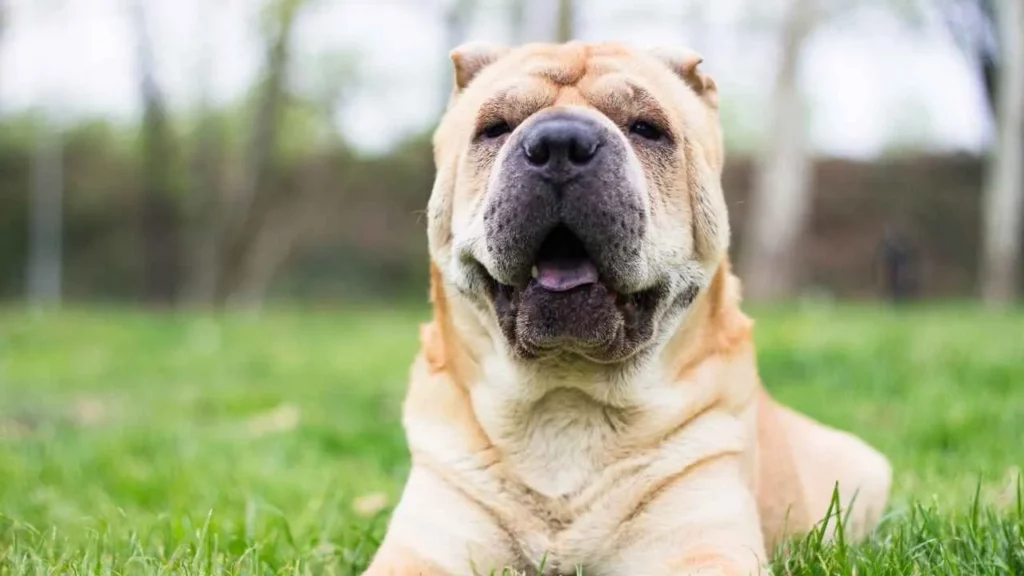
The Shar-Pei is one of the most recognizable dog breeds, known for its deeply wrinkled skin and serious, dignified expression. This ancient breed has roots in southern China, with historical evidence showing that Shar-Peis were used for hunting and served as guardians to protect homes and farmlands.
Interestingly, evolution has done little to alter their distinct appearance. Their loose, wrinkled skin wasn’t just for looks; it helped protect them in fights by allowing them to twist and turn even when held. Shar-Peis are naturally defensive, fiercely loyal to their families, and known for their calm but vigilant nature.
Genetic research shows strong continuity in the breed’s DNA, tracing their lineage back thousands of years, making them one of the most ancient and enduring dog breeds still around today.
9. Akita Inu
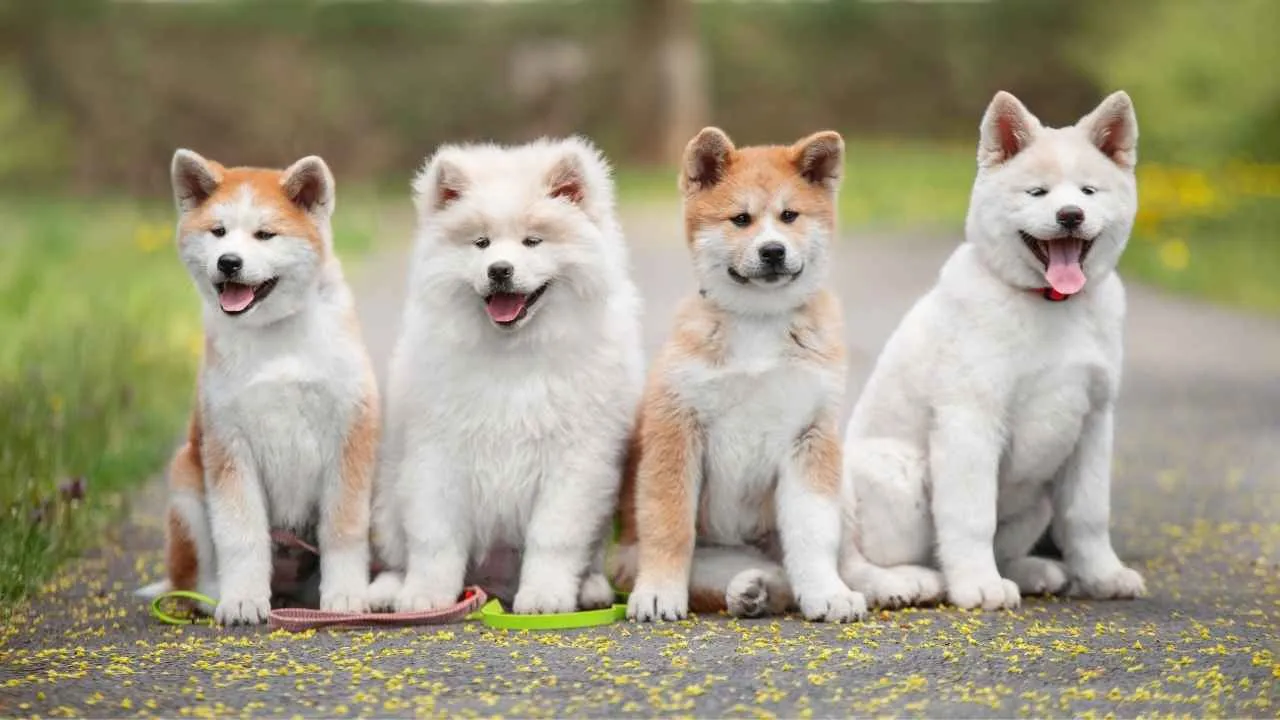
The Akita Inu is a large, powerful breed from Japan, known for its courage, loyalty, and quiet dignity. In Japanese culture, Akita statues are often given as gifts of good fortune, symbolizing wishes for health, happiness, and protection.
Historically, Akitas served as elite guard dogs and were even used in combat. Samurai warriors relied on them to help hunt large game such as boars and bears. For centuries, owning an Akita was a privilege reserved for Japanese nobility and the wealthy, further cementing the breed’s prestigious status.
Modern genetic research shows that Akitas have undergone very little genetic drift, meaning today’s Akitas are remarkably similar to their ancient ancestors. They are still regarded as a national treasure of Japan, representing strength, loyalty, and cultural heritage.
Despite their serious appearance, Akitas are calm, deeply protective, and devoted to their families, making them one of the most revered and respected breeds in the world.
10. Greenland Dog
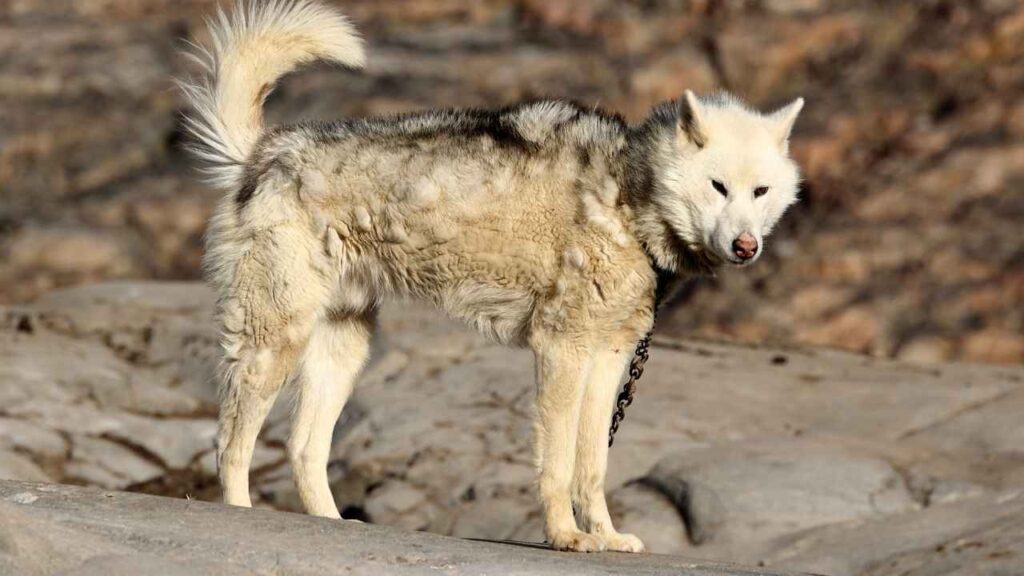
The Greenland Dog is a powerful, resilient sled dog with a strong genetic connection to the grey wolf. Bred to survive and work in some of the coldest regions on Earth, these dogs were historically used for pulling heavy sleds, traveling across icy terrain, and hunting wild animals in snow-covered landscapes.
Descended directly from ancient grey wolves, Greenland Dogs are among the oldest and most primitive sled dog breeds. Built for endurance and strength, they were never just pets; they were essential survival companions for Arctic explorers and Indigenous communities alike.
While modern Greenland Dogs can be loyal and affectionate, they retain their working instincts and require both physical activity and mental stimulation to thrive. Their ancient lineage and wolf-like characteristics make them a truly remarkable breed that bridges the past and present.
Conclusion
These remarkable dogs are far more than just adorable companions—they are living links to history. Each breed tells a story: some echo the spirit of ancient hunters and warriors, while others reflect the opulence of palace life and royal ancestry. Their appearances, temperaments, and instincts have been shaped over thousands of years of dog domestication, making them walking testaments to our shared past with the dog population.
Unlike many modern dog breeds that have been selectively bred for specific appearances or trends, these ancient breeds preserve the essence of their wild and working roots. Whether it’s the wolf-like endurance of Siberian dogs, the noble demeanor of modern European dogs, or the spiritual symbolism found in Asian breeds, these dogs are more than pets—they’re sacred companions, symbols of good fortune, and guardians of ancient bloodlines.
Their dog genomes offer rare insights into dog evolution, tracing back to early domesticated dogs and diverging long before the rise of many modern breeds. From the Carolina Dog of North America to the enduring sled dogs of Greenland, these breeds connect us with the past and challenge the boundaries of what we know about dog ancestry.
If you’re seeking a canine companion that carries a deep sense of purpose, soul, and history, one of these ancient domestic dogs may be the perfect fit. They aren’t just pets—they are living heritage.


